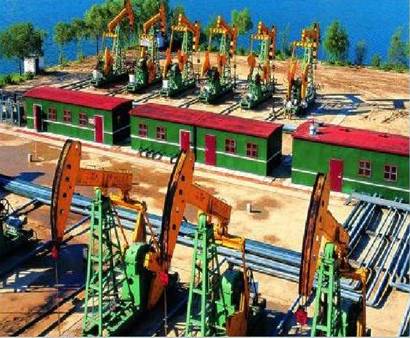Remarkable Achievements in 60 Years: Underpinnings of Rapid Economic Growth
2. Energy production and supply capacity expands increasingly to provide a solid, reliable and stable energy basis for economic growth.
The productivity has been liberalized greatly to inject strong vigor to energy development after birth of the new China, in particular after the beginning of reform and opening up. The following data demonstrates exceptional achievements made by China in the past 60 years by China:
—— The coal output has ranked first worldwide for many years, reaching 2.79 billion in 2008, 87.2 times that of 1949 and 4.6 times that of 1978.
——Oil and natural gas outputs increased steadily. The crude oil output was 190 million tons in 2008, 1,627 times that of 1949 and 1.8 times that of 1978, ranked fifth in the world.
 |
|
Daqing Oil Field |
——Natural gas output reaches 76.08 m3 in 2008, 6,849.1 times that of 1949 and 5.6 times that of 1978, ranked ninth in the world.
——The electricity industry has made great strides forward. The installed capacity was 793 million kW and the annual power output reached 3,466.9 billion kW in 2008, 458.1 and 806.3 times those in 1949, and 13.9 and 13.5 times those of 1978, respectively. Since 2004, the installed capacity has expanded by almost 100 million kW a year, representing an astonishing pace never seen in other parts of the world. The installed capacity has taken the second place since 1996.
 |
|
Installed Power Capacity of China in 1949-2008(Unit: 10,000 kW) |
In addition to expansion in energy output, auxiliary services have been improved to provide a sound energy transmission system. By the end of 2007, the crude and finished oil transmission pipeline network, including north-to-south and west-to-east transmission, reached an annual throughput of 320 million tons of crude oil and 100 million tons of finished oil; an over 31,000 km nationwide natural gas pipework were completed to transmit 81 billion m3 gas a year; three coal railways were completed in North, Central and South China in addition to many coal terminals, forming a coal transportation system integrating rails, roads, and waterways; 327,100 km 200 kV and higher power transmission lines were erected, providing higher availability of electricity.
Energy conservation always remains high on the list of priorities in China. In the early 1980s, the policy of "development and conservation & conservation first" was introduced in China; reducing energy consumption per unit of GDP by 20% was included as a restrictive indicator into the Outline of the Eleventh Five-year Plan for National Economic and Social Development of China. Guided by a series of energy conservation policies, energy conservation is kept at a moderate growth rate. In the 30 years from 1978 to 2009, the primary energy consumption increased 5.5% a year and the annual GDP growth reached 9.8% on average, meeting the goal of "quadrupling DGP at doubled energy consumption". An annual energy conservation rate of 3.9% is achieved.
 |
|
4% Annual Decrease in Energy Consumption per Unit of GDP (At 2005 Prices) |
 0
0 






